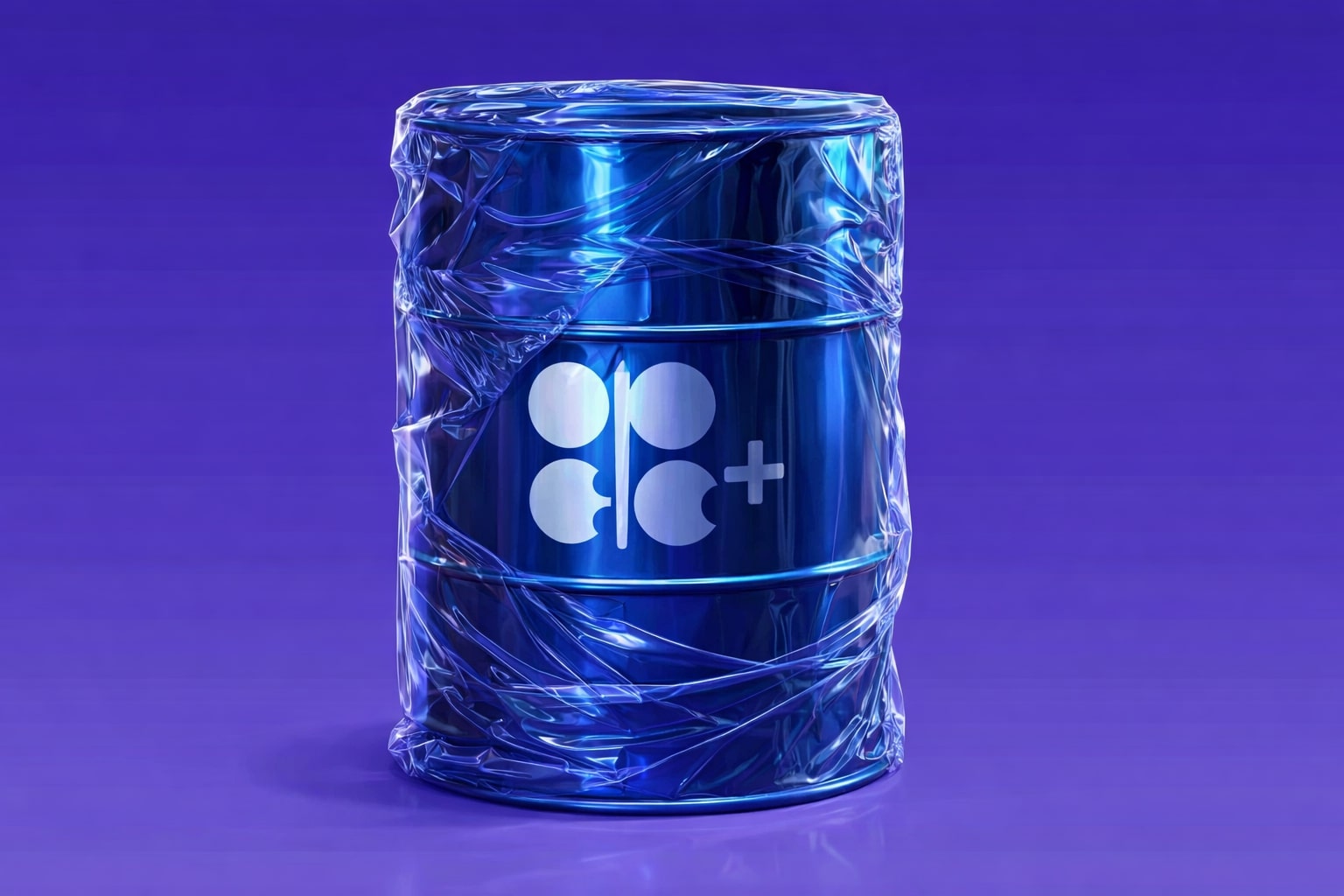
WTI Slips to $66.96 as Russian Sanctions Clash With U.S. Supply Glut
Crude Weighs Long-Term Demand vs. Short-Term Inventories and Cap Tensions | That's TradingNEWS
WTI (CL=F) and Brent (BZ=F) Recoil Despite Bullish Tariff and Supply Risk Signals
Crude markets are trapped in a conflicted state, pricing in both heavy inventory builds and escalating policy risks. As of July 10, WTI crude (CL=F) trades at $66.96, down 2.08%, while Brent (BZ=F) stands at $68.93, also lower by 1.80%. The selloff comes just days after prices tested two-week highs near $70 as markets digested the fallout from U.S. tariff escalations, Iranian conflict ceasefires, and EU sanction maneuvering. However, the rally collapsed under the weight of a 7-million-barrel inventory surge in the U.S., more than quadruple the 1.5 million expected — confirming that domestic supply remains a key bearish overhang.
Estonia Pushes for Harsher Russia Sanctions, Oil Cap Revision Sparks Diplomatic Rifts
A renewed policy flashpoint has emerged within the EU as Estonia demands the crude oil price cap on Russian exports be slashed from $60 to $45 per barrel. Estonian Foreign Minister Margus Tsahkna called the cap cut “the most powerful tool” to erode Russian wartime revenues, signaling Tallinn may veto the entire 18th sanctions package unless its demands are met. Russia’s seaborne crude currently trades just under $70, rendering the existing cap symbolic and unenforceable. Malta and other maritime nations oppose the move over shipping sector risks. The European Commission's new plan to float the cap dynamically — adjusting to global benchmarks — may offer a path to compromise. But this new structure has yet to be ratified, and oil markets are on alert for sudden shifts in Russian crude export policy or retaliatory moves.
Geopolitics Volatile: Iran Talks Resume, U.S. Pressure Grows on Oil Flows
Oil's geopolitical premium briefly spiked to $80 during the June Israel-Iran conflict but has since collapsed back into the mid-$60s. Now, the U.S. and Iran are reportedly rescheduling nuclear negotiations following U.S.-Israeli strikes on Iranian facilities. While diplomacy is officially back on the table, Iran’s uranium stockpile exceeding 400kg at 60% purity and its refusal to cooperate with IAEA inspectors have added strategic tension to a fragile ceasefire. Should talks fail, markets expect Trump to reinstate bombing campaigns, with potentially major implications for Gulf oil shipments and pricing. Despite this, speculative flows remain muted, suggesting energy traders are skeptical a new war risk premium is justified in the near term.
OPEC Forecasts No Peak Oil: Demand to Reach 123 Million bpd by 2050
OPEC’s 2025 World Oil Outlook destroyed any narrative around “peak demand,” projecting oil consumption to surge by 19 million bpd through 2050, with global needs reaching nearly 123 million bpd. The cartel forecasts India alone to add 8.2 million bpd, becoming the largest marginal demand contributor. Africa, the Middle East, and the rest of Asia are expected to contribute 14 million bpd of combined growth, while developed economies scale down. To match this surge, 19.5 million bpd in new refining capacity is required — with Asia-Pacific and Africa accounting for 90% of near-term expansions. OPEC's message is unambiguous: long-term supply constraints must be addressed or price volatility will dominate the next two decades.
WTI Crude (CL=F) Technicals Highlight Fragility Near $67
The technical picture on CL=F shows precarious structure. Price is trapped below the 200-day EMA, which now acts as dynamic resistance near $67.85. Intraday support was previously defined at $65, a key historical breakout zone, but inventories have rattled this footing. RSI levels on the daily chart hover around 42, reflecting growing downside momentum. A move back below $66.30 would likely open the door to a test of the $64.10 zone, while only a clean break above $69.70 would neutralize the bearish tone.
Brent (BZ=F) Trapped Between Rejection and Support in $68–$71 Band
Brent crude mirrors WTI’s weakness. The $68 zone now serves as both key psychological and moving average convergence point, with the 50-day EMA offering support. Price action over the last 48 hours has formed a micro double-top near $70.85, and a failure to regain that level risks a slide toward the $66.70 region. Technical traders are watching for a bullish catalyst to drive Brent back to $73, which would then re-engage the 200-day EMA near $74.60, but absent a new supply shock or sanctions wave, the upside case looks increasingly difficult.
Refining Gaps Could Fuel Medium-Term Tightness Despite Current Glut
Even as inventories rise in the U.S., global refining capacity growth is falling behind long-term demand projections. Only 5.8 million bpd in new capacity is expected by 2030, well short of what is needed, especially with China’s refinery expansion now slowing. From 2035 onward, additions shrink dramatically to just 1.2 million bpd by 2050, raising alarm bells that future bottlenecks could emerge even if prices stay contained now. Any unplanned outages, weather disruptions, or geopolitical shutdowns in the next 5–10 years could send prices spiking far beyond today's level.
Oil Sentiment Diverges: Traders Fade Short-Term, Funds Eye Structural Tightness
Energy hedge funds have reduced exposure to front-month crude contracts after the post-inventory drop, with speculative net longs in WTI down 11% week-over-week. However, large institutional flows are pivoting toward long-dated Brent options, reflecting a structural bullish view tied to OPEC's capacity warnings and a weakening U.S. dollar. The DXY’s retreat from 98.40 to 97.40 offers additional tailwinds, though U.S. Treasury yields remain elevated, dampening near-term commodity allocation.
Verdict: Hold — Market Caught Between Supply Glut and Long-Term Structural Risk
Oil is deeply bifurcated: spot prices face immediate downward pressure from surging U.S. inventories and weak technical structure, while longer-term dynamics — including massive refining underinvestment, OPEC demand projections, and unresolved geopolitical threats — remain unmistakably bullish. With WTI (CL=F) at $66.96 and Brent (BZ=F) at $68.93, both benchmarks are in holding zones. A confirmed break below $66 would re-open downside to $63, while upside will remain capped without a breakthrough on sanctions or a fresh geopolitical shock. This is a Hold, with a bullish medium-term bias if prices reclaim their 200-day moving averages and if EU-Russian cap dynamics tighten supply chains further.
That's TradingNEWS
Read More
-
UCO ETF Price Forecast: Can NYSEARCA:UCO at $18.57 Ride a 2026 Oil Squeeze?
18.12.2025 · TradingNEWS ArchiveStocks
-
XRPI at $10.50 and XRPR at $14.93 Hit XRP ETF Lows While XRP-USD Holds $1.84 After 30 Days of Inflows
18.12.2025 · TradingNEWS ArchiveCrypto
-
Natural Gas Price Forecast: Henry Hub Holds Around $4 as EIA Draw Hits 167 Bcf
18.12.2025 · TradingNEWS ArchiveCommodities
-
USD/JPY Price Forecast: Pair Holds Above 155 As BoJ And US CPI Set Up A Major Break
18.12.2025 · TradingNEWS ArchiveForex



















